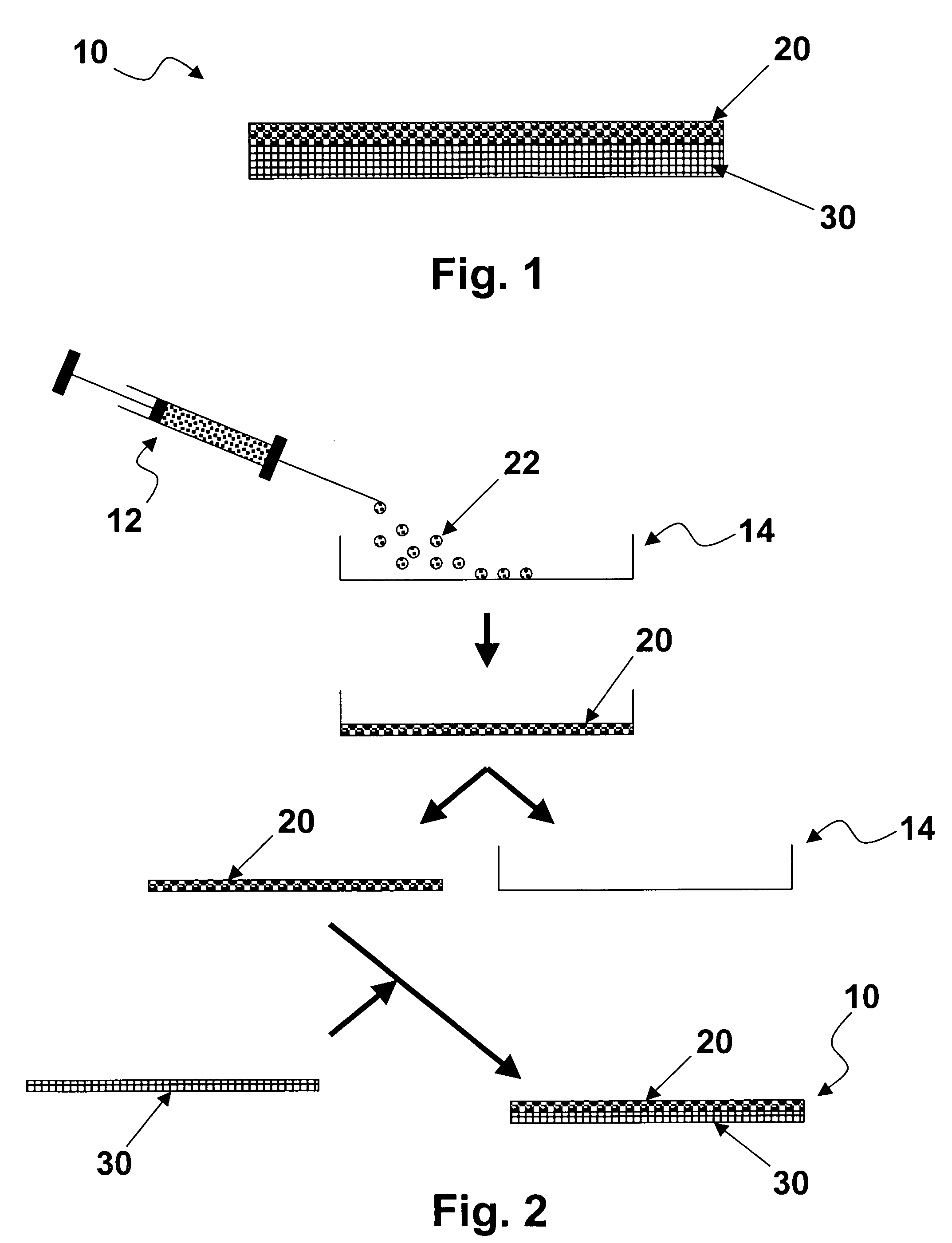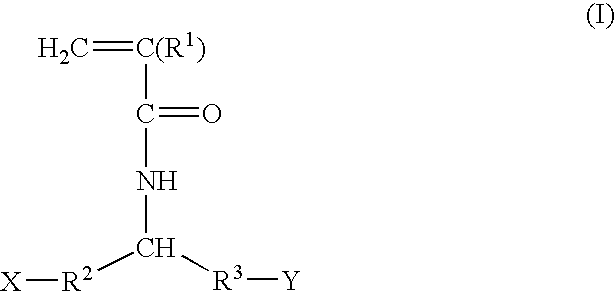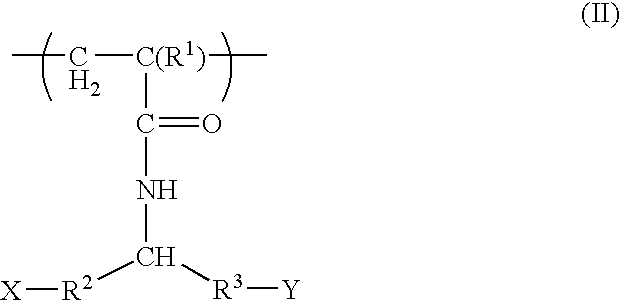Tissue engineering devices for the repair and regeneration of tissue
a tissue engineering and tissue technology, applied in the field of tissue engineering devices, can solve the problems of loose seeding of cells, lack of control of the distribution of cells on the surface of the scaffold, and inability to achieve the same success in many other organ fields
- Summary
- Abstract
- Description
- Claims
- Application Information
AI Technical Summary
Problems solved by technology
Method used
Image
Examples
example 1
[0064] Cells were subjected to cell sheet preparation and were combined with non-woven, degradable scaffolds as a first step towards generation of tissue engineering devicces. Osteoblasts / chondrocytes for musculo-skeletal applications as well as urothelial cells / bladder smooth muscle cells for uro-genital applications were tested. Cells were cultured prior to scaffold deposition.
[0065] Porcine urothelial cells were isolated as described in Rahman, Z et al., “Isolation and primary culture urothelial cells from normal human bladder,”Urol. Res. 15 (1987) (6), pp. 315-320. Cells were cultured in Keratinocyte Serum Free Medium (Invitrogen, Carlsbad, Calif.) in tissue culture plastic flasks. The cultures were incubated at 37° C. with 5% CO2. Cells used for experiments were between passages 1 and 2.
[0066] Human bladder smooth muscle cells were purchased from Cambrex (CC-2533; Cambrex, Walkersville, Md.). Cells were cultured in muscle cell growth medium, SmGM-2 (CC-3182; Cambrex, Walkersv...
example 2
[0085] An in vivo implantation pilot study was performed using the tissue engineering devices prepared in Example 1 in a SCID mouse subcutaneous model. Twenty Fox Chase SCID CB17SC / male mice were ordered from Taconic Inc. (Germantown, N.J.). The average age of the animals at the time of the study was 5 weeks. Animals were selected without any apparent systematic bias. Duration of the study was 4 weeks.
[0086] The devices were implanted subcutaneously by making two skin incisions, each approximately 5 mm in length, on the dorsum of the mice. The incisions were placed transversely over the lumbar area about 5 mm cranial to the palpated iliac crest, with one on either side of the midline. Devices with the same treatment were placed in the two sites. The skin was separated from the underlying connective tissue to make a small pocket, and the implant was placed about 10 mm cranial to the incision. The skin incisions were closed with Reflex 7 metal wound clips (CellPoint Scientific, Inc.,...
PUM
| Property | Measurement | Unit |
|---|---|---|
| temperature | aaaaa | aaaaa |
| critical solution temperature | aaaaa | aaaaa |
| critical solution temperature | aaaaa | aaaaa |
Abstract
Description
Claims
Application Information
 Login to View More
Login to View More - R&D
- Intellectual Property
- Life Sciences
- Materials
- Tech Scout
- Unparalleled Data Quality
- Higher Quality Content
- 60% Fewer Hallucinations
Browse by: Latest US Patents, China's latest patents, Technical Efficacy Thesaurus, Application Domain, Technology Topic, Popular Technical Reports.
© 2025 PatSnap. All rights reserved.Legal|Privacy policy|Modern Slavery Act Transparency Statement|Sitemap|About US| Contact US: help@patsnap.com



